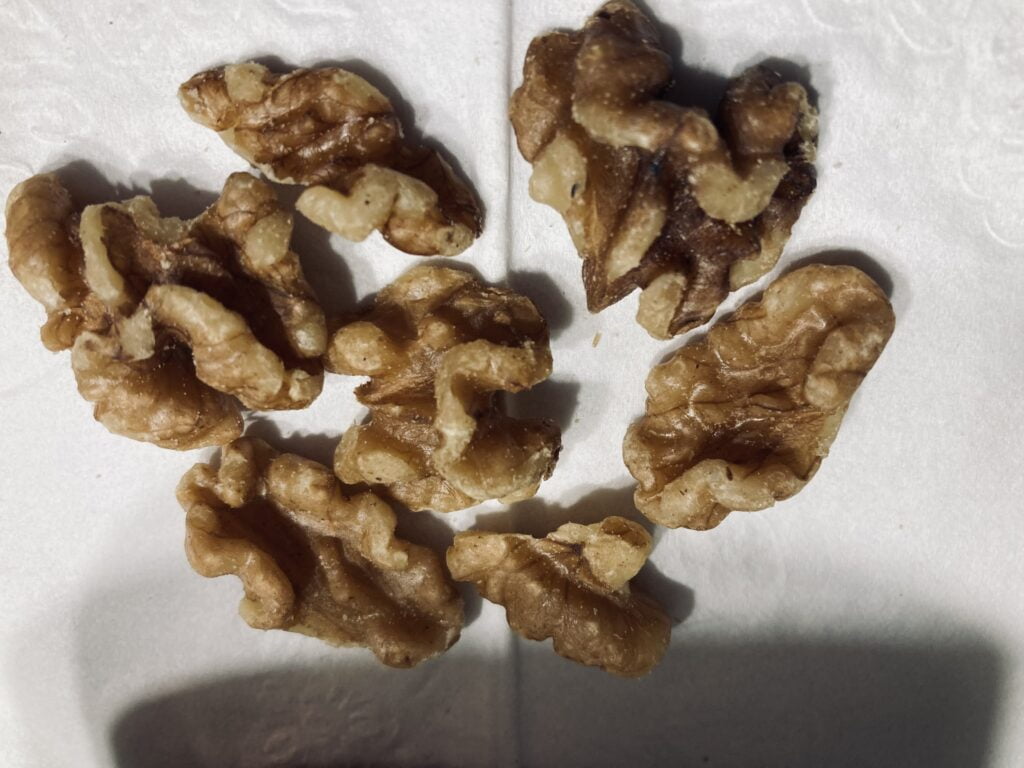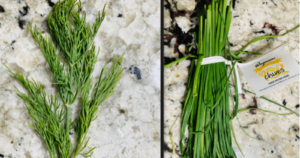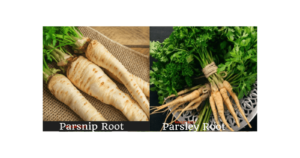Almonds have a smooth, teardrop-shaped kernel. Cashews stand out with a distinctive kidney shape, enclosing a creamy, buttery kernel. Walnuts, with their rugged shell, reveal two asymmetrical lobes.
Almonds, walnuts, and cashews, three of nature’s most coveted nuts, each possess distinctive physical characteristics that set them apart in the world of culinary delights. Almonds, encased in a tough outer shell, reveal a smooth, light-brown kernel once cracked open, boasting a characteristic teardrop shape with a pointed tip. Walnuts, on the other hand, present a more intricate appearance, with their rugged, shell-like exterior concealing two delicate, asymmetrical lobes.
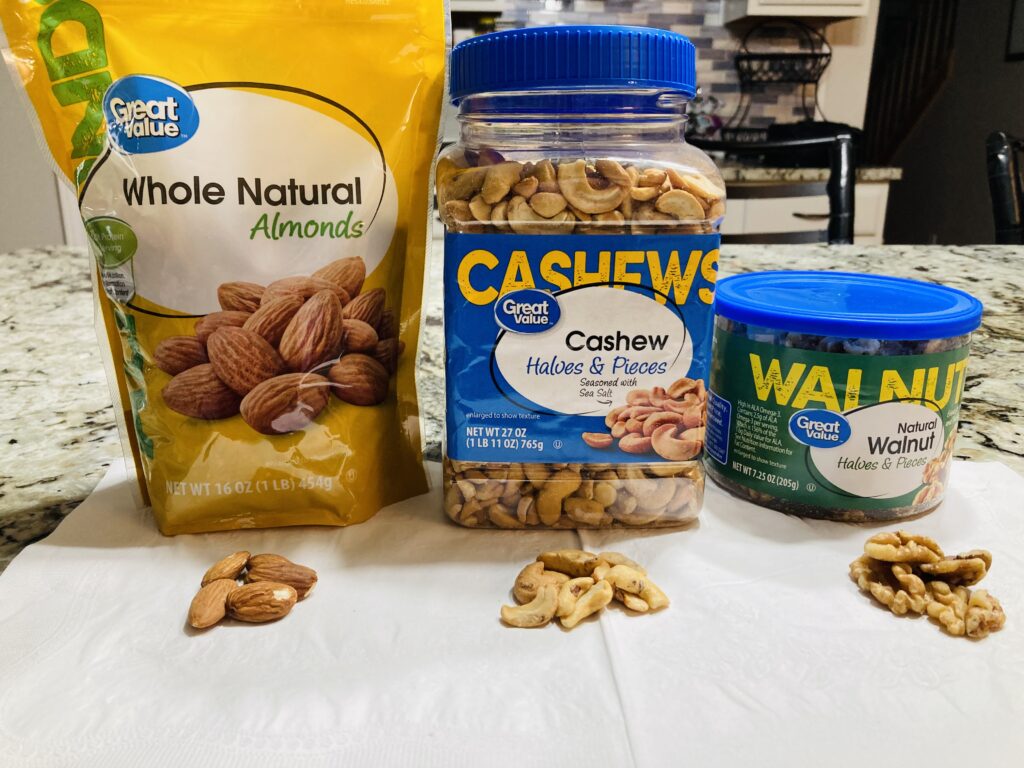
Their dark, earthy hue and intricate patterns make them easily recognizable. Cashews, in stark contrast, flaunt a distinctive kidney or crescent shape, derived from their unique growth pattern. Enclosed within a dual-layered shell, they house a creamy, pale kernel that exudes a subtle, buttery aroma. Together, these nuts not only vary in taste and texture but also captivate the senses with their distinct and intriguing physical forms.
Almond vs Walnut vs Cashew
| Almond | Walnut | Cashew |
| Nutrition Profile: Almonds: Rich in Vitamin E, magnesium, and fiber. Known for heart-healthy monounsaturated fats. | High in omega-3 fatty acids, antioxidants, and protein. Beneficial for brain health. | Good source of copper, zinc, and iron. Provide healthy fats and protein. |
| Health Benefits: Almonds: Support heart health, regulate blood sugar, promote skin health. | Improve cognitive function, reduce inflammation, aid in weight management. | Boost immune function, support bone health, aid in digestion |
| Allergies and Sensitivities: Almonds: Common allergen, especially among tree nut allergies. | Potential allergen; less common than almonds. | Can cause allergic reactions, though less prevalent than almond allergies. |
| Culinary Uses: Almonds: Eaten raw, roasted, in butter form, or used in various dishes like salads, desserts, and Asian cuisine. | Often eaten raw, added to salads, baked goods, or used in pesto. | Consumed raw, roasted, in dairy-free creams, or used in Asian, Indian, and vegan dishes. |
| Cost and Accessibility: Almonds: Widely available, but can be relatively more expensive due to high demand. | Available in most stores, often slightly more expensive than almonds. | Easily found in stores, but can be pricier compared to other nuts. |
| Environmental Impact: Almonds: Controversial due to water-intensive farming practices, especially in drought-prone regions. | Generally considered more sustainable in terms of water usage compared to almonds. | May have less environmental impact as they are primarily grown in tropical regions. |
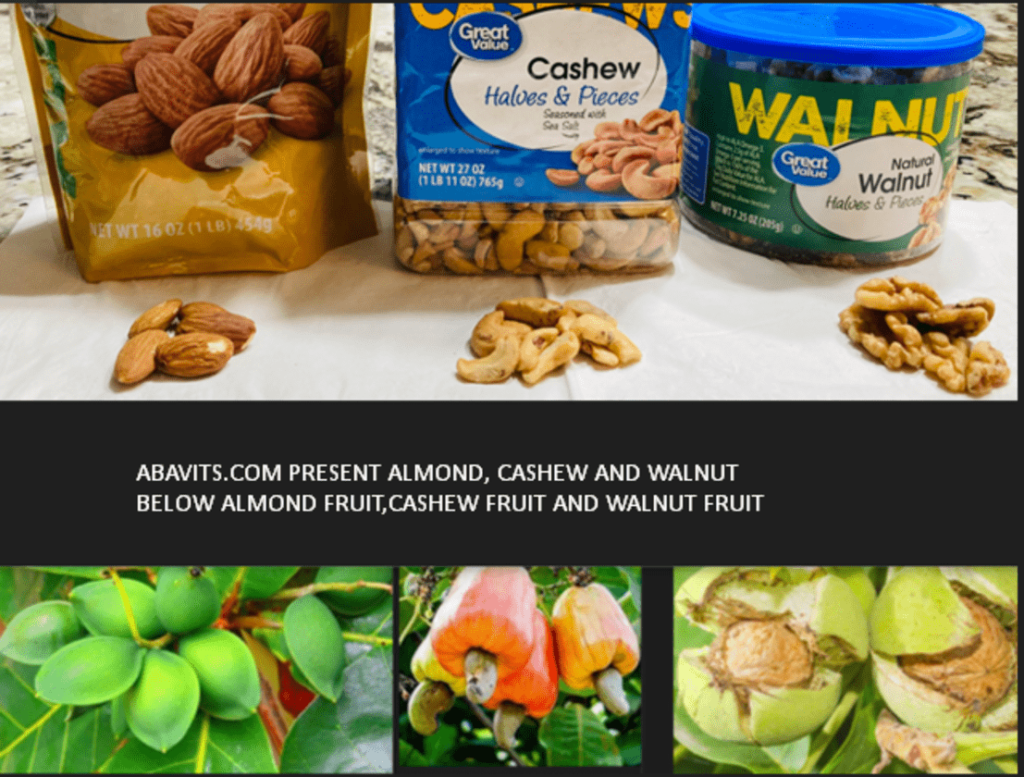
Culinary Restrictions and Preferences of Almond, Cashew and Walnut

Gluten-Free and Paleo Diets: Almonds are a popular choice in these diets due to their versatility and nutritional value. They can be ground into flour, used as a base for gluten-free crusts, or eaten whole as a snack.
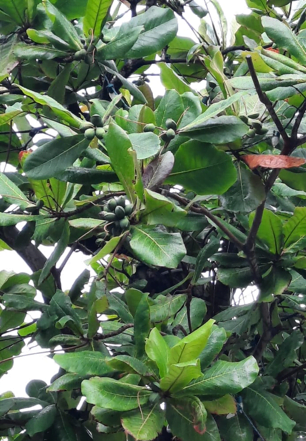
Photo by Valisa Allen.
Low-Carb Diets: Almonds are relatively low in carbohydrates, making them a suitable option for those following low-carb or ketogenic diets.
Dairy-Free and Plant-Based Diets: Almond milk, a non-dairy alternative to cow’s milk, is widely consumed by people following dairy-free or plant-based lifestyles.
For Consideration Do Not give any kind of Nuts to Kids Or Adults Before Checking for ALLERGIES.

Vegetarian and Vegan Diets: Walnuts are a prized source of omega-3 fatty acids among plant-based eaters. These healthy fats are essential for heart health and brain function.
Gluten-Free Baking: Ground walnuts can be used in gluten-free baking to add a nutty flavor and texture to recipes.
Salads and Dressings: Chopped walnuts are a popular addition to salads, giving them a crunchy texture and a rich, nutty taste. They can also be used in salad dressings.


Vegan and Dairy-Free Cooking: Cashews are prized in vegan cuisine for their ability to create creamy textures when blended. Cashew cream, made by blending soaked cashews, is used in a wide range of dairy-free recipes, from sauces to desserts.
Gluten-Free and Grain-Free Diets: Cashews can be ground into flour, making them a suitable choice for those following gluten-free or grain-free diets.
Taste and Flavor of Almond
Almonds have a distinct taste and flavor that can be described as mildly sweet and nutty. The flavor is rich and buttery, with a hint of sweetness that becomes more pronounced when the almonds are roasted. The taste can vary slightly depending on whether the almonds are raw, roasted, or otherwise processed.
Raw almonds have a more subtle flavor, while roasted almonds have a deeper, more intense nuttiness. Additionally, the skin of the almond can contribute a slightly bitter note, especially in the case of raw almonds. Some people prefer blanched almonds, which have had the skin removed, for a milder taste.
Almonds are a versatile nut and are commonly used in both sweet and savory dishes. They can be enjoyed on their own as a snack, added to salads, used in baking, or processed into almond butter or almond milk.
Storage and Shelf Life of Almond, Walnut and Cashew
ALMOND
- Have a relatively long shelf life and can be stored for several months. Refrigeration (Optional): While not necessary, refrigerating almonds can extend their shelf life. Ensure they are in a sealed container to prevent absorption of odors
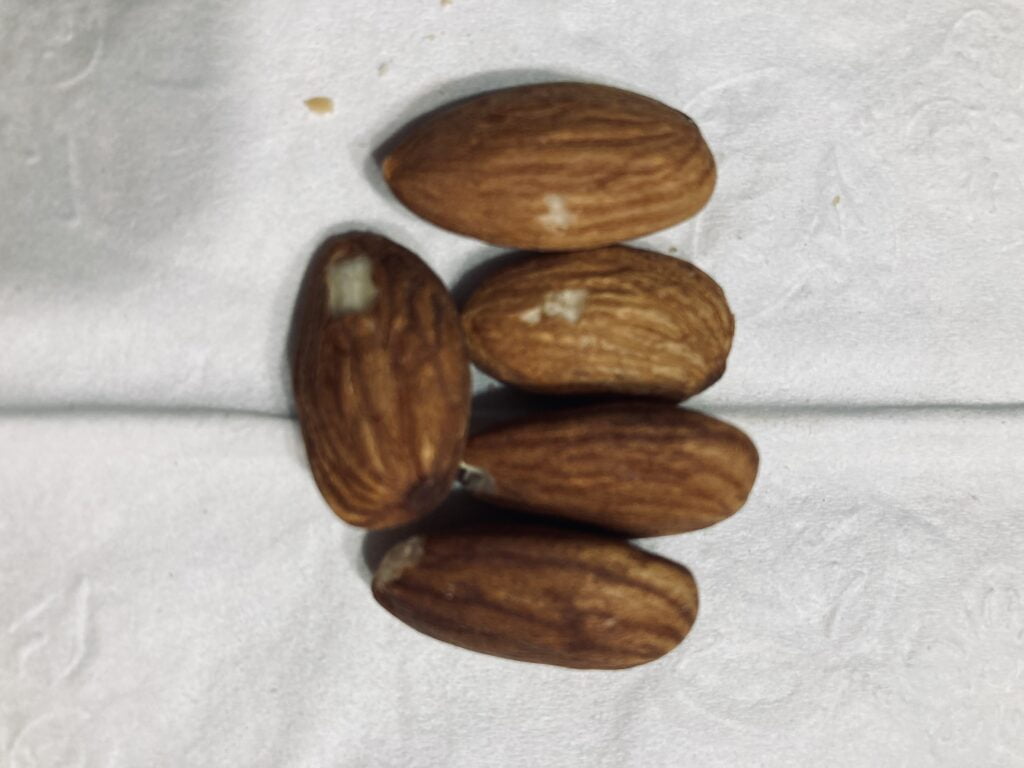
Cool, Dark Place: Keep almonds in a cool, dark place to maintain their quality. A pantry or cupboard is suitable.
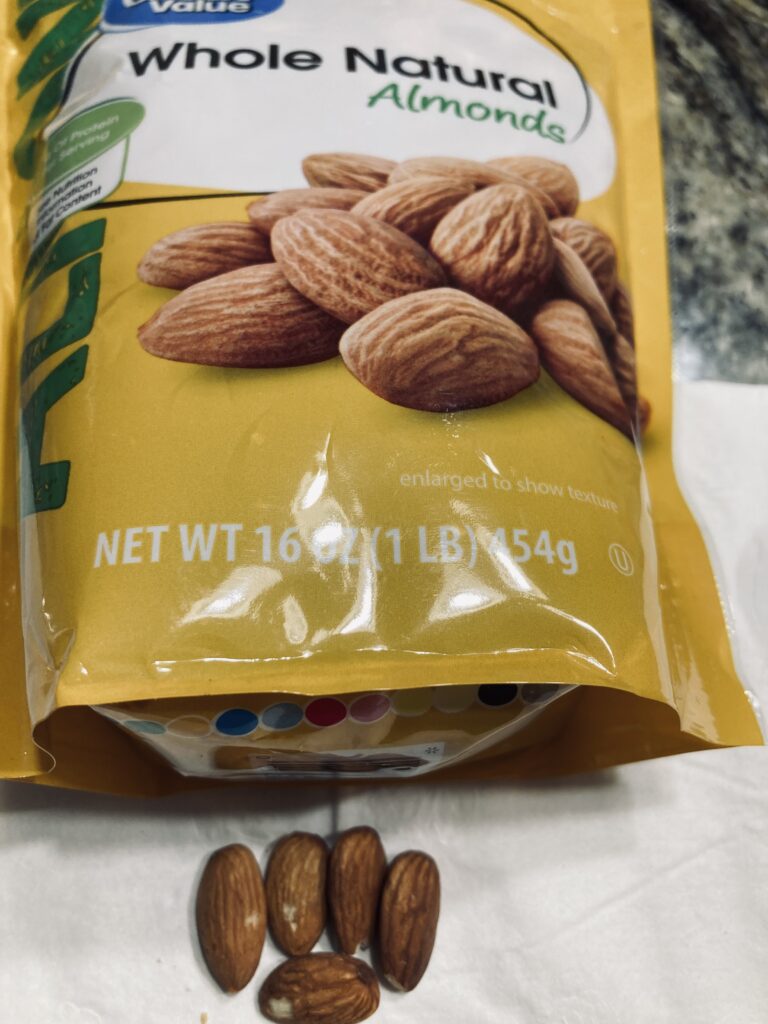
Walnuts:
- Due to their high oil content, they can go rancid more quickly and should be stored properly.

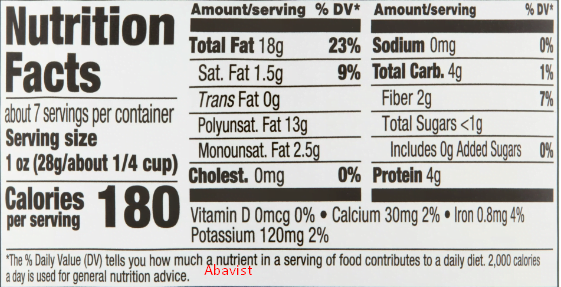
Cashews:
- Also have a shorter shelf life compared to almonds.
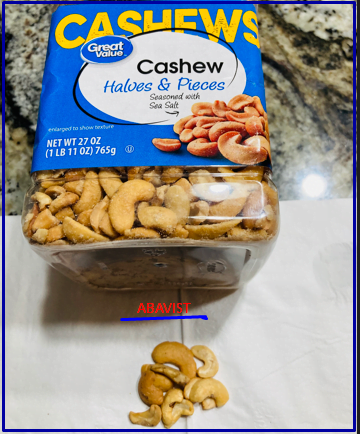

- Airtight Container: Like almonds, cashews should be stored in an airtight container to protect them from moisture and air.
- Refrigeration (Optional): Cashews can be stored in the refrigerator to maintain their freshness, especially if you live in a humid environment.
- Avoid Light: Keep cashews away from direct sunlight, as exposure to light can lead to rancidity.
What are the Taste and Flavor of Cashew?
- Mild and Sweet: Cashews have a mild, sweet, and buttery flavor. This makes them versatile and suitable for both sweet and savory dishes.
- Creamy Texture: In addition to their taste, cashews are known for their creamy texture. When roasted or used in recipes, they add a smooth and rich consistency.
- Nutty Undertones: While being mild and sweet, cashews also have subtle nutty undertones. This adds depth to their flavor profile, making them enjoyable on their own or as part of various dishes.
- Roasted Notes: Roasting cashews enhances their flavor by imparting a slightly deeper and toasted taste. Roasted cashews are a popular snack and are often used in culinary applications to add a crunchy and flavorful element.
- Versatility: Cashews are versatile and can be used in both sweet and savory dishes. They are commonly used in desserts, salads, stir-fries, and curries.
- Complementary to Other Flavors: The mild and sweet nature of cashews allows them to complement and enhance the flavors of other ingredients in a dish. This makes them a popular choice in various cuisines around the world.
Important Nutritional value of Almond
Several meta-analyses indicate that a greater consumption of nuts is linked to a decreased risk of overall cardiovascular disease, total cancer, and mortality from all causes. In an extensive epidemiological investigation involving health professionals, an examination of overall nut consumption revealed that consuming tree nuts, such as almonds, at least twice a week was linked to a 13% reduction in the risk of total cardiovascular disease and a 15% decrease in the risk of coronary heart disease.
| Nutrient Category | Amount/Percentage |
|---|---|
| Dietary Fiber | 4 grams / 14% DV |
| Protein | 6 grams |
| Healthy Fats | |
| – Total Fat | 14 grams |
| – Monounsaturated Fat | 64% |
| – Polyunsaturated Fat | 25% |
| Nutrient-Dense | |
| – Vitamin E | Excellent Source 50% |
| – Copper | Excellent Source |
| – Magnesium | Excellent Source |
| – Manganese | Excellent Source |
| – Riboflavin | Excellent Source |
| – Phosphorus | Good Source 10% |
| -Selenium | 2% |
| – Sodium | Sodium-free |
| -Zinc | 8% |
| -Folate | 4% |
| -Thiamin | 4% |
| -Potassium | 4% |
| -Iron | 6% |
| -Manganese | 25% |
| -Vitamin B6 | 2% |
15 Products of Almond you can Purchase
- Almond Butter: A spread made by grinding almonds into a creamy consistency.
- Almond Milk: A dairy-free alternative to cow’s milk made by blending almonds with water and straining the mixture.
- Almond Flour: Ground almonds that are used as a gluten-free flour substitute in baking.
- Almond Oil: Extracted from almond nuts, it is often used in cooking and as a cosmetic oil.
- Marzipan: A sweet confection made from almonds, sugar, and sometimes egg whites, often used in baking and cake decoration.
- Almond Extract: A concentrated flavoring made from almonds, commonly used in baking to add almond flavor.
- Almond Meal: Similar to almond flour, it is made from ground almonds and used in various culinary applications.
- Almond Paste: A mixture of ground almonds and sugar, used in pastries and desserts.
- Almond Snacks: Various snacks like roasted almonds, flavored almonds, and almond trail mixes.
- Almond Yogurt: Some dairy-free yogurts are made from almond milk.
- Almond Ice Cream: Non-dairy ice cream made with almond milk.
- Almond Granola Bars: Snack bars that often contain almonds for added texture and nutrition.
- Almond-Crusted Fish or Chicken: Almonds can be ground and used as a coating for proteins in savory dishes.
- Almond Pesto: A variation of traditional pesto made with almonds instead of pine nuts.
- Almond Energy Bites: Healthy snack bites made with almonds, dates, and other nutritious ingredients.
Cultural Significances of Almond, Walnut And Cashew
ALMOND
- Good Luck and Prosperity: In various cultures, almonds are considered a symbol of good luck, prosperity, and fertility. They are sometimes included in wedding ceremonies and traditional celebrations to bring blessings to the couple.
- Mediterranean Traditions: Almonds have deep roots in Mediterranean cuisines. They are used in both savory and sweet dishes, such as almond-stuffed olives, marzipan desserts, and almond-based sauces.
WALNUT
- Mediterranean and Middle Eastern Cuisine: Walnuts have a significant presence in Mediterranean and Middle Eastern culinary traditions. They are used in dishes like baklava, a famous Middle Eastern dessert, and in various savory recipes.


2. Symbol of Intelligence: In some cultures, walnuts are associated with wisdom and intelligence due to their resemblance to the brain. They are sometimes used symbolically in rituals or ceremonies.
Making the perfect Baklava
CASHEW
- Indian Cuisine: Cashews are a staple in Indian cuisine and are used in a variety of dishes, from curries to sweets. They add richness and creaminess to many traditional recipes.
- Nut of Celebration: Cashews are often used in celebratory dishes, especially during festivals and special occasions in Indian culture. They are a key ingredient in sweets like kaju katli.

Essential Nutritional value of Cashew
The monounsaturated and polyunsaturated fats present in cashews contribute to lowering LDL cholesterol and triglyceride levels. This, in turn, diminishes the likelihood of developing cardiovascular disease, stroke, and heart attacks.
The USDA National Nutrient Database indicates that a 1-ounce (28.35 grams) serving of raw cashews contains the following nutritional components.
| Nutrient | Amount |
|---|---|
| Calories | 157 |
| Carbohydrate | 8.56 g |
| Sugar | 1.68 g |
| Fiber | 0.9 g |
| Protein | 5.17 g |
| Total Fat | 12.43 g |
| Calcium | 10 mg |
| Iron | 1.89 mg |
| Magnesium | 83 mg |
| Phosphorus | 168 mg |
| Potassium | 187 mg |
| Sodium | 3 mg |
| Zinc | 0.64 mg |
| Vitamin C | (content not specified) |
| Vitamin B (Folate) | 7 mcg DFE |
Key Health benefits Of Cashew vs Walnuts vs Almond
Shedding light on the remarkable health benefits of three extraordinary nuts: almonds, walnuts, and cashews. These humble yet powerful sources of nutrition have been cherished for centuries, not only for their delightful taste but also for their immense contribution to our overall well-being.
Almonds, with their rich reserves of essential nutrients, are a nutritional powerhouse. They are a superb source of healthy fats, protein, fiber, vitamins, and minerals. Consuming almonds has been associated with improved heart health, reduced cholesterol levels, and better blood sugar control. Additionally, the presence of vitamin E and antioxidants in almonds contributes to strengthened immunity and reduced risk of chronic diseases.

Walnuts, resembling the intricate workings of our own brains, offer a unique combination of omega-3 fatty acids, antioxidants, and phytochemicals. These elements have been linked to enhanced cognitive function, improved heart health, and a lower risk of inflammation-related disorders. Walnuts’ impact on brain health, in particular, has garnered attention, as studies suggest they may contribute to sharper memory and cognitive abilities.
Cashews, often overlooked in comparison to their nut counterparts, are a treasure trove of vital nutrients. They boast an impressive array of minerals, including magnesium, zinc, and iron, which play crucial roles in immune function, muscle health, and oxygen transport in the body. Furthermore, cashews are a valuable source of healthy monounsaturated fats, promoting cardiovascular well-being and aiding in weight management.
Cashews
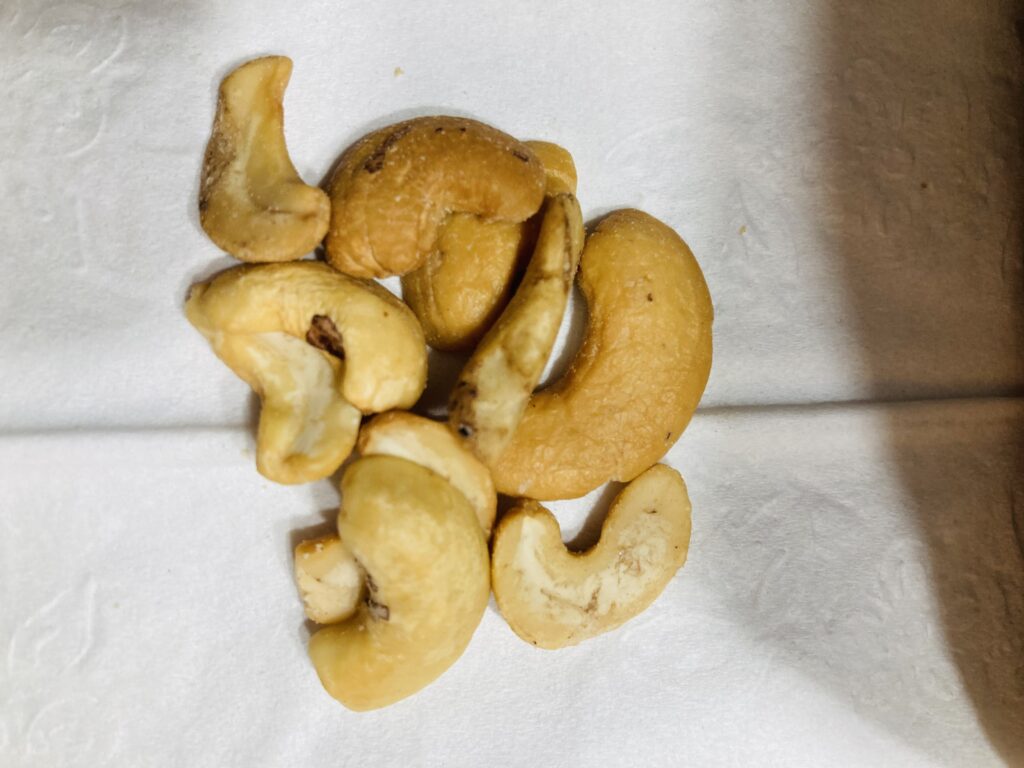
- Heart Health: Cashews are rich in monounsaturated and polyunsaturated fats, which can help reduce bad cholesterol levels. They also contain magnesium, which supports a healthy heart rhythm.
- Weight Management: Despite being relatively high in calories, studies suggest that people who consume nuts like cashews tend to have a lower risk of obesity.
- Bone Health: Cashews are a good source of minerals like calcium, magnesium, and phosphorus, all of which are important for maintaining healthy bones and teeth.
- Blood Pressure Regulation: The potassium content in cashews helps regulate blood pressure levels, contributing to cardiovascular health.
- Antioxidant Properties: Cashews are rich in antioxidants, which can help protect your cells from damage caused by free radicals.
Walnuts
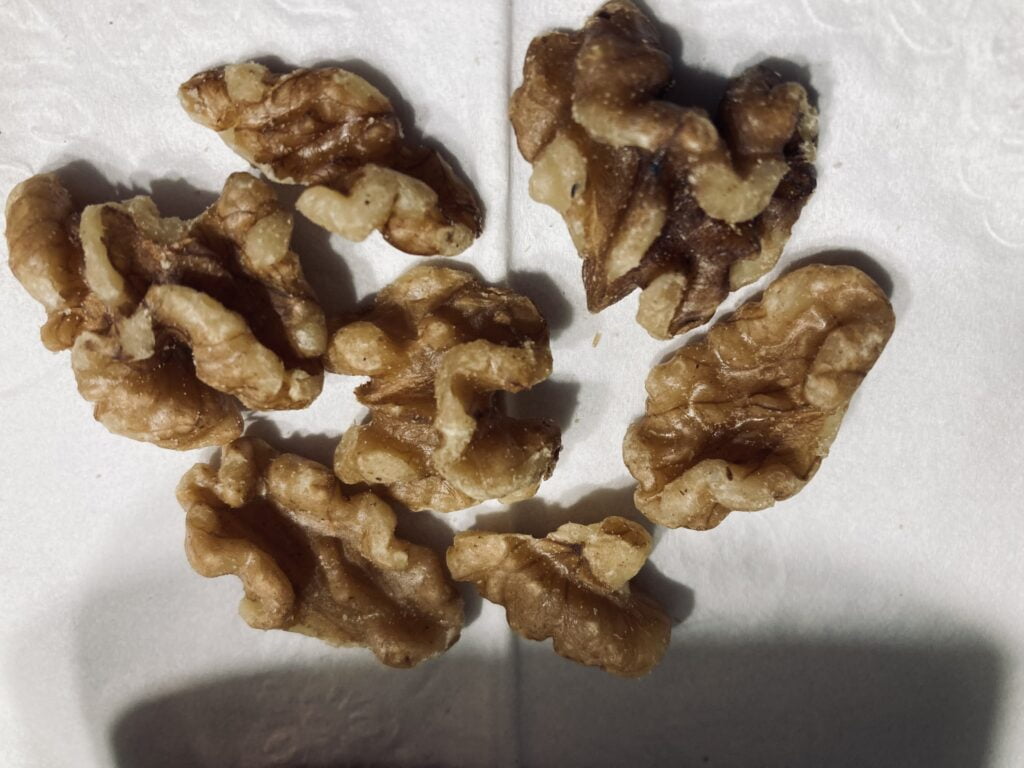
- Brain Health: Walnuts are packed with omega-3 fatty acids, which are essential for brain function. They may support cognitive function and may reduce the risk of cognitive decline.
- Heart Health: Walnuts have been associated with improved cholesterol levels. They contain alpha-linolenic acid (ALA), a type of omega-3 fatty acid, which can help reduce inflammation and support heart health.
- Antioxidant Powerhouse: Walnuts are a good source of antioxidants, including vitamin E, which can help combat oxidative stress.
- Weight Management: Despite being energy-dense, studies suggest that walnuts can be a part of a healthy diet and may even aid in weight management due to their satiating effect.
- Improved Gut Health: Walnuts contain fiber, which can support a healthy digestive system and may contribute to a diverse gut microbiome.
Almonds
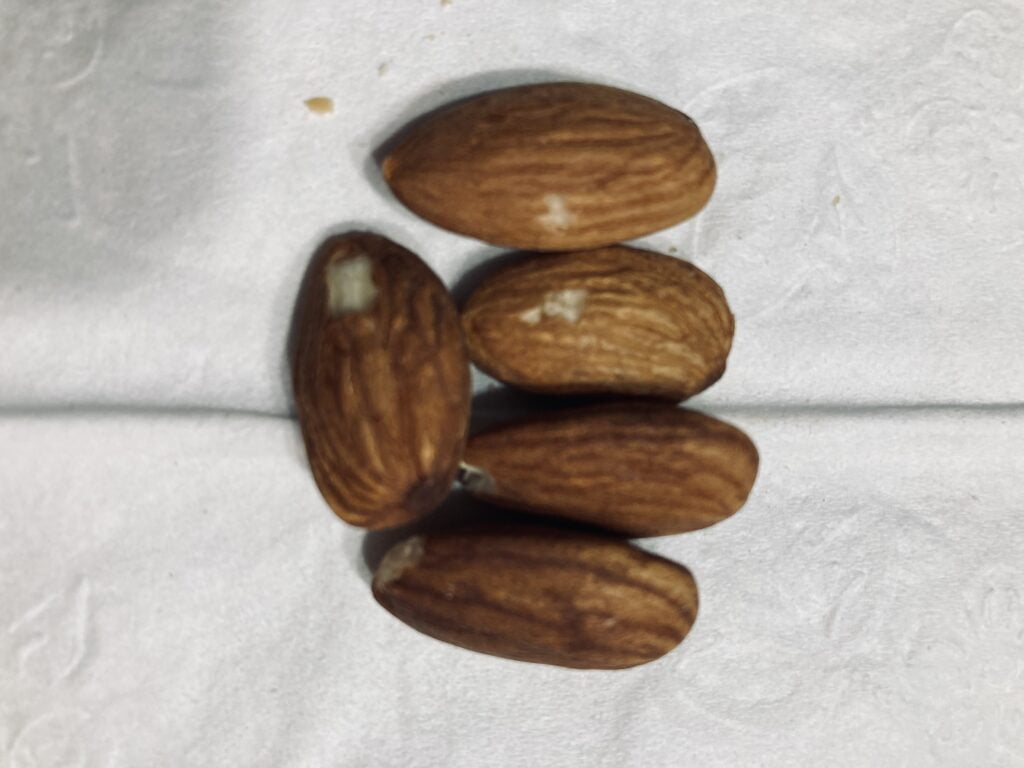
- Heart Health: Almonds are high in monounsaturated fats, which are heart-healthy fats. They have been linked to reduced LDL cholesterol levels and improved overall heart health.
- Blood Sugar Control: The fiber, protein, and healthy fats in almonds can help stabilize blood sugar levels, making them a good option for individuals with diabetes.
- Weight Management: Almonds are nutrient-dense and can help you feel full and satisfied, potentially aiding in weight management.
- Bone Health: Almonds are a good source of calcium, which is important for maintaining healthy bones and teeth.
- Skin Health: Vitamin E, which is abundant in almonds, is a potent antioxidant that can help protect your skin from damage caused by free radicals.
In conclusion, these three nuts, almonds, walnuts, and cashews, represent nature’s gift to our health. Their diverse nutritional profiles make them an invaluable addition to a balanced diet, offering a wide range of benefits that touch upon various aspects of our well-being. By incorporating these nuts into our daily lives, we embark on a journey towards a healthier, more vibrant future.
- Almonds are known for heart health and are versatile in culinary applications.

- Walnuts are particularly beneficial for brain health and are commonly used in salads and baked goods.

- Cashews are creamy and used in various vegan and Asian dishes, known for their immune-boosting properties.
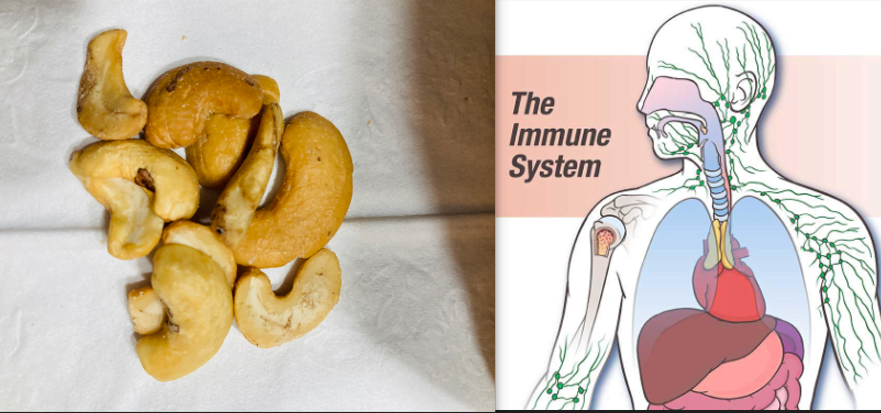
In conclusion, these three nuts, almonds, walnuts, and cashews, represent nature’s gift to our health. Their diverse nutritional profiles make them an invaluable addition to a balanced diet, offering a wide range of benefits that touch upon various aspects of our well-being. By incorporating these nuts into our daily lives, we embark on a journey towards a healthier, more vibrant future.
Remember, when considering health benefits, individual dietary needs and preferences should be taken into account. This brainstorm should help provide a comprehensive overview of the different aspects to consider when comparing almonds, walnuts, and cashews.
Taste and flavor of Walnuts
Walnuts have a distinctive taste and flavor that can be described as rich, nutty, and slightly bitter. The flavor profile can vary depending on factors such as the walnut variety and how they are processed. Here are some characteristics of the taste and flavor of walnuts:
- Nutty: Walnuts have a classic nuttiness that is rich and earthy. This flavor is often described as robust and full-bodied.
- Slightly Bitter: Some people detect a mild bitterness in walnuts, especially in the skin that covers the nut. This bitterness can be more pronounced in raw walnuts compared to roasted ones.
- Sweetness: While walnuts are not overly sweet, there is a subtle sweetness that balances out the nutty and bitter notes. This sweetness can be more pronounced in toasted or roasted walnuts.
- Buttery: Walnuts have a buttery texture, especially when eaten fresh or shortly after roasting. This adds a smooth and creamy element to their overall profile.
- Astringency: The skin of the walnut can contribute to a slight astringency, creating a complex taste experience. This astringency is often more noticeable in raw or lightly processed walnuts.
- Mild Woody Notes: Some people detect mild woody undertones in the flavor of walnuts, which can add depth to their overall taste.
19 Products of Cashew you can purchase.
- Whole Cashews: The nuts are consumed as a snack or used in cooking and baking.
- Cashew Pieces: Broken or chopped cashews are used in recipes or as toppings.
- Cashew Butter: Similar to peanut butter, it’s a spread made from ground cashews.
- Cashew Oil: Extracted from cashew nuts, it is used in cooking and as a dressing in some cuisines.
- Cashew Milk: A plant-based milk alternative made from cashews.
- Cashew Flour: Ground cashews used in gluten-free and low-carb baking.
- Cashew Cheese: A dairy-free cheese alternative made from cashews.
- Cashew Snack Bars: Nut bars that often combine cashews with other nuts, fruits, and seeds.
- Cashew Granola: Breakfast cereal made with cashews, oats, and other ingredients.
- Cashew Brittle: A sweet confection made by caramelizing sugar and adding cashews.
- Cashew Ice Cream: A non-dairy ice cream made from cashew milk.
- Cashew Nutritional Yeast Cheese Sauce: A vegan cheese sauce made from cashews and nutritional yeast.
- Cashew Trail Mix: A mix of cashews, other nuts, dried fruits, and sometimes chocolate.
- Cashew Protein Bars: Nutritional bars with added protein, often including cashews.
- Cashew Crusted Fish or Chicken: Crushed cashews used as a coating for protein in savory dishes.
- Cashew Dressing: A salad dressing made with cashews, herbs, and other ingredients.
- Cashew Pesto: A pesto sauce made with cashews instead of pine nuts.
- Cashew Chocolate: Cashews coated or mixed with chocolate for a sweet treat.
- Cashew Energy Bites: Healthy snacks made by combining cashews with dates, seeds, and other ingredients.
Characteristics of the Cashew Tree
The cashew tree is a large, perennial evergreen that can reach heights of up to 14 meters (46 feet). It typically possesses a short and sometimes irregularly shaped trunk. The leaves are arranged spirally and have a tough, leathery texture, ranging from elliptic to obovate in shape, measuring between 4 and 22 centimeters (1+1⁄2–8+3⁄4 inches) in length and 2–15 cm (3⁄4–6 in) in width, featuring smooth edges. The tree produces small flowers organized in a panicle or corymb, extending up to 26 cm (10 in) in length. Initially pale green, the flowers gradually shift to a reddish hue, displaying five slender, pointed petals measuring 7–15 millimeters (1⁄4–5⁄8 in) long.

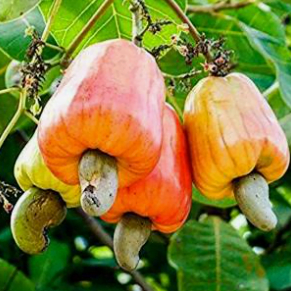
The actual fruit of the cashew tree is a kidney- or boxing-glove-shaped drupe, which forms at the tip of the cashew apple. Initially, the drupe develops on the tree, and subsequently, the pedicel expands to become the cashew apple. The drupe then transforms into the true fruit, encapsulating a single seed encased in a double shell. This seed is often regarded culinarily as a nut. It’s important to note that the shell contains an allergenic phenolic resin known as Anacardic acid, which is a potent skin irritant. This compound is chemically related to urushiol, a well-known allergenic and toxic oil found in plants like poison ivy and the lacquer tree.
Native to Brazil and many Caribbean Islands, cashew trees have now spread across the globe. These trees bear a resemblance to a squishy apple, featuring a distinctive kidney-shaped nut at one end. The cashew apple, a yellowish-orange fruit, is also a notable component of the tree. Despite their modest size, cashew trees thrive in arid climates. They offer farmers a dual benefit, yielding a valuable cash crop in the form of the nut, alongside providing an edible fruit.
Can the Cashew Apple Be Eaten?

Yes Cashew apple is Edible ,I had the pleasure of enjoying this fruit while in the Caribbean Island of St. Vincent and the Grenadines. The exterior of the receptacle is characterized by its thin, smooth, taut, and waxy skin, displaying a range of colors from golden yellow to red, with mature specimens exhibiting variegated blends of red and yellow hues. Beneath the surface, the yellow flesh is dense, aqueous, fleshy, and soft, containing numerous chewy, stringy fibers. When ripe, cashew apples emit a distinctive aroma that combines fruity, sweet, and pungent nuances. The flesh itself possesses a sweet, tropical, and vegetal taste, accompanied by a hint of astringency.
Cashew Apple is Used in the Grenadines Island to make a sweet dessert called stew Cashew.

How Dose the Almond Tree/plant grows looks?
The almond tree, scientifically known as Prunus dulcis, belongs to the rose family (Rosaceae) and bears an edible seed. Originally hailing from southwestern Asia, this tree is a significant economic crop primarily cultivated in Mediterranean regions, and are wildly grown in the Caribbean along beach front and sandy areas and typically found between 28° and 48° N, and between 20° and 40° S. Notably, nearly 80 percent of the world’s almond supply is produced in California.

Almond trees are deciduous with a hardy dormancy. Typically growing 3–4.5 metres (10–15 feet) tall, the trees are strikingly beautiful when in flower.they bloom, with light pink to white flowers that smell nice. These flowers need bugs to help them make seeds. The baby fruit looks like a peach, but as it grows up, the outside opens up and the pit falls out. Even though we call them nuts, almonds are actually seeds inside a tough fruit shell, not a dry fruit like real nuts.


What is walnut?
A walnut is the edible seed of any tree of the genus Juglans (family Juglandaceae), particularly the Persian or English walnut, Juglans regia. The fruits of trees within the Juglandaceae family are sometimes mistaken for drupes. However, they are classified as accessory fruits because the outer covering is technically an involucre and not morphologically part of the carpel. This distinction means that it does not qualify as a drupe but rather as a nut with drupe-like characteristics.
How dose the Walnut Tree/plant Grow and look?
Walnut trees belong to the genus Juglans, which is the type genus of the family Juglandaceae. These trees are characterized by their deciduous nature, reaching heights of 10–40 meters (33–131 feet). They have pinnate leaves that are 200–900 millimeters (7.9–35.4 inches) long, consisting of 5–25 leaflets. The shoots of walnut trees have chambered pith, a distinctive feature they share with wingnuts (Pterocarya) but not with hickories (Carya), which are also in the Juglandaceae family.
This genus encompasses 21 different species that can be found across the north temperate regions of the Old World, stretching from southeast Europe to Japan. Additionally, they are more widely distributed in the New World, ranging from southeast Canada to California and extending south to Argentina.
The edible walnuts, which are a popular food consumed worldwide, are typically harvested from cultivated varieties.


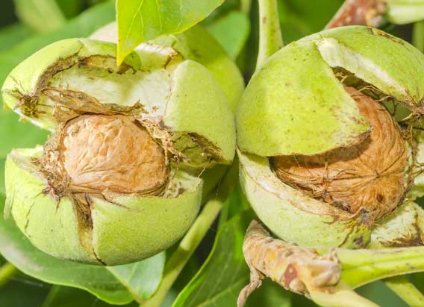
English Walnut trees thrive best in full sun, requiring a minimum of six to eight hours of direct sunlight daily to produce a bountiful harvest. English Walnut Trees possess a moderate watering need. They favor receiving a deep and thorough watering on a weekly basis, particularly in hot and dry spells. Nevertheless, once they are well-established, they can endure certain drought conditions.
Vital Nutritional value of walnuts per 100 grams:
- Calories: 654 kcal
- Protein: 15.2 g
- Total Fat: 65.2 g
- Saturated Fat: 6.1 g
- Monounsaturated Fat: 8.9 g
- Polyunsaturated Fat: 47.2 g
- Carbohydrates: 13.7 g
- Dietary Fiber: 6.7 g
- Sugars: 2.6 g
- Vitamins:
- Vitamin E: 21.1 mg
- Vitamin K: 2.7 µg
- B Vitamins (B1, B2, B3, B5, B6, B9): in varying amounts
- Minerals:
- Calcium: 98 mg
- Iron: 2.9 mg
- Magnesium: 158 mg
- Phosphorus: 346 mg
- Potassium: 441 mg
- Zinc: 3.1 mg
11 Consideration before eating nuts
When it comes to considering nuts, there are several aspects to take into account:
- Nutrition Profile: Nuts are rich in various nutrients like healthy fats, fiber, protein, vitamins (e.g., Vitamin E and B-complex vitamins), minerals (e.g., magnesium, potassium), and antioxidants. They are also a good source of plant-based protein.
- Dietary Restrictions and Allergies: Nuts can be a significant source of protein for vegetarians and vegans. However, they can be problematic for those with nut allergies. It’s important to be aware of any dietary restrictions or allergies when considering nuts in your diet.
- Portion Control: Nuts are energy-dense, meaning they contain a lot of calories in a small volume. Consuming them in excessive quantities can lead to an excess intake of calories. It’s important to practice portion control.
- Type of Nut: Different nuts have different nutritional profiles. For example, almonds are high in Vitamin E, walnuts are a good source of omega-3 fatty acids, and cashews are relatively high in carbohydrates.
- Preparation and Cooking Methods: How nuts are prepared or cooked can significantly affect their nutritional content. For example, roasting nuts can alter their fatty acid profile and reduce some of their nutrient content.
- Storage: Nuts contain natural oils that can go rancid if not stored properly. Keeping them in a cool, dry place can help maintain their freshness.
- Sustainability: Consider where the nuts are sourced from. Sustainable and ethical sourcing practices are important for the environment and local communities.
- Environmental Impact: The production of some nuts can have environmental consequences, especially in regions where they are grown. For instance, almond farming in California has raised concerns about water usage.
- Processing and Added Ingredients: Many commercially available nuts come with added ingredients like salt, sugar, or various flavorings. If you’re concerned about your sodium or sugar intake, look for unsalted or unsweetened varieties.
- Benefits for Health Conditions: Some nuts, like almonds, have been associated with lower cholesterol levels, while walnuts are linked to improved heart health. It’s important to consider any specific health conditions you may have.
- Culinary Use: Nuts are incredibly versatile in cooking and can be used in a wide range of dishes from salads to desserts. Consider how you plan to use them in your meals.
Remember, while nuts are nutritious, they are just one part of a balanced diet. It’s important to consider them in the context of your overall eating habits and dietary needs. If you have specific dietary concerns or health conditions, consulting a registered dietitian or healthcare provider is advisable.
Key Factors to Considered when purchasing Nuts
1. Allergy Alert
Tree nuts and peanuts are widely recognized as significant allergens. If you, or someone in your household, are affected by this allergy, please exercise caution and avoid these allergens. For personalized guidance, it is recommended to seek advice from a Registered Dietitian. Be aware of any allergies you or others may have. Some people are allergic to specific nuts, so check the packaging for potential cross-contamination and allergen information.
2. Purchasing Nuts
When purchasing nuts in bulk, it’s crucial to prioritize the fat content factor, as it makes them susceptible to rancidity. Look for a supplier with a high turnover to guarantee the freshness of the nuts you’re buying.
3. When Choosing Nuts
Prioritize those with consistently colored shells. Stay clear of any nuts with cracks or holes. Go for nuts that feel substantial for their size and don’t produce a rattling sound in the shell, indicating plumpness rather than shriveling. Similarly, when purchasing shelled nuts, emphasize uniformity, good color, and plumpness.
4. Nuts purchased in supermarkets or specialty food shops
Items packaged in jars, cans, or vacuum-sealed packages are shielded from air exposure, preserving their freshness. Nevertheless, this type of packaging can contribute to the overall cost of an already relatively pricey food category. It is essential to scrutinize labels to stay away from products that are oil-roasted or contain additives.
5. Oil roasted nuts
Avoid buying oil roasted nuts with all those natural oils, adding more oil to nuts is redundant.
6. Freshness:
Nuts can go rancid over time due to their high oil content. Check for the freshness by examining the packaging date or asking the retailer about the product’s shelf life.
7. Appearance and Storage Conditions
Choose nuts that have a plump and uniform appearance. Avoid those with shriveled or discolored kernels, as these may indicate poor quality or age. Ensure that the store where you are purchasing the nuts stores them in proper conditions. Nuts should be kept in a cool, dry place to maintain their freshness.
8. Smell and Packaging
Fresh nuts should have a pleasant, nutty aroma. If they smell off or have a rancid odor, they may be past their prime. Look for nuts in well-sealed and airtight packaging to protect them from moisture and air, which can cause them to spoil or go rancid.
11. Shell vs. Shelled
Consider whether you want nuts in their shells or pre-shelled. Shelled nuts are convenient for immediate consumption or use in recipes, while nuts in their shells may have a longer shelf life.
12. Variety Organic vs. Conventional
- Different nuts offer varying flavors, textures, and nutritional profiles. Consider the specific type of nut you need for your recipe or personal preferences.
- Decide whether you prefer organic nuts, which are grown without synthetic pesticides or fertilizers. Keep in mind that organic options may be more expensive.
13. Price, Origin and Usage
Compare prices among different brands and types of nuts. Sometimes, bulk purchases can be more cost-effective, but make sure to balance quantity with quality. Some people prefer to buy nuts from specific regions or countries known for producing high-quality nuts. Consider the origin if this is important to you.
Consider the purpose for which you are buying the nuts. Are they for snacking, baking, cooking, or as an ingredient in a dish? Different recipes may require different types of nuts.
Some people prefer to buy nuts from specific regions or countries known for producing high-quality nuts. Consider the origin if this is important to you.
Storing almonds, cashews, and walnuts involves considering factors such as temperature, humidity, and exposure to light. Here’s a general guide for storing each type of nut separately:
Eye-Opening tips for All Nuts
- Avoid Humidity: Nuts, in general, should be kept away from high humidity to prevent mold growth and staleness.
- Check Regularly: Periodically check your nuts for freshness. If they develop an off smell or taste, they may have gone rancid.
- Use Opaque Containers: Use opaque containers to protect nuts from light, which can cause them to deteriorate.
Resources
https://en.wikipedia.org/wiki/Walnut
https://www.medicalnewstoday.com/articles/269468
https://www.medicalnewstoday.com/articles/309369#benefits

